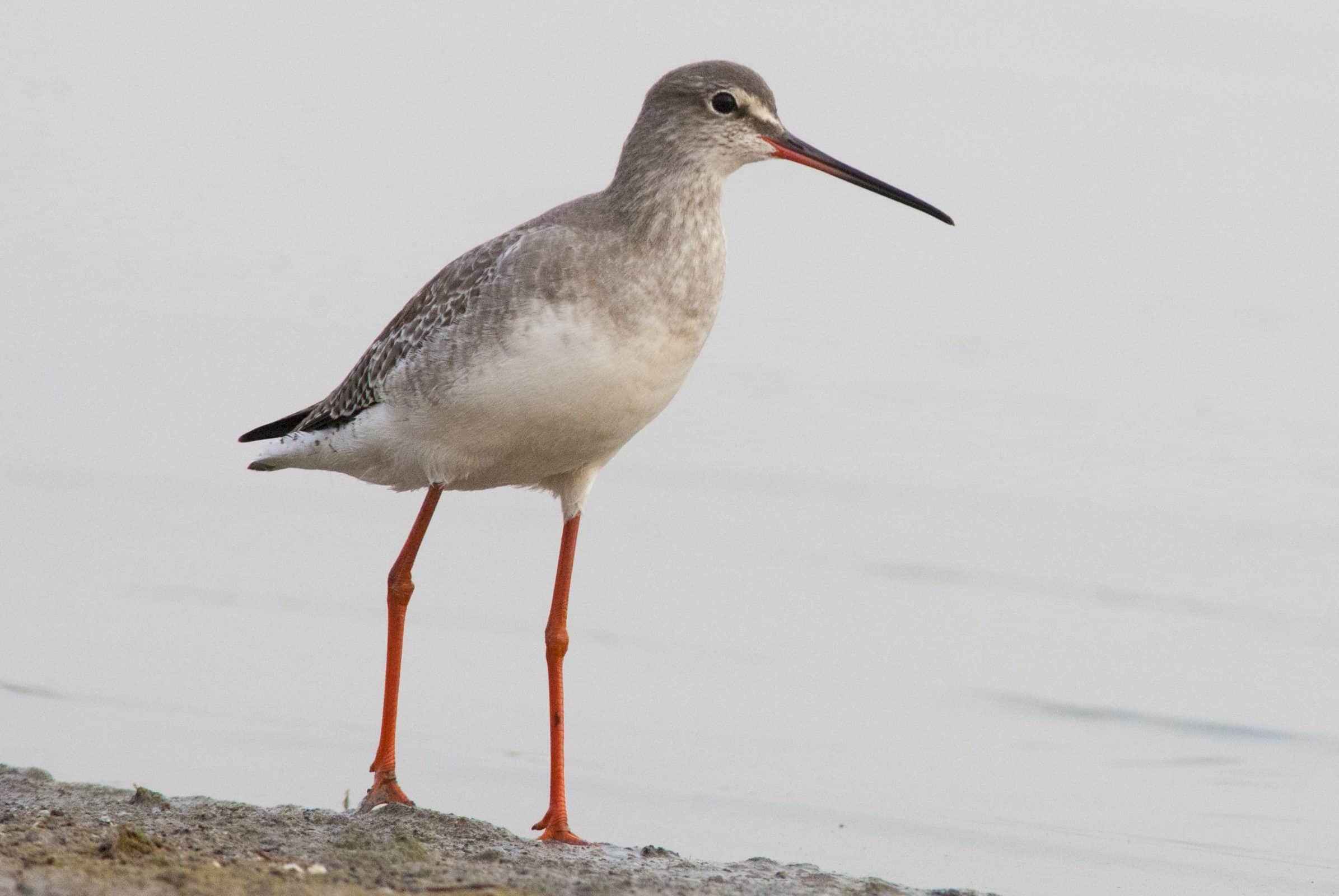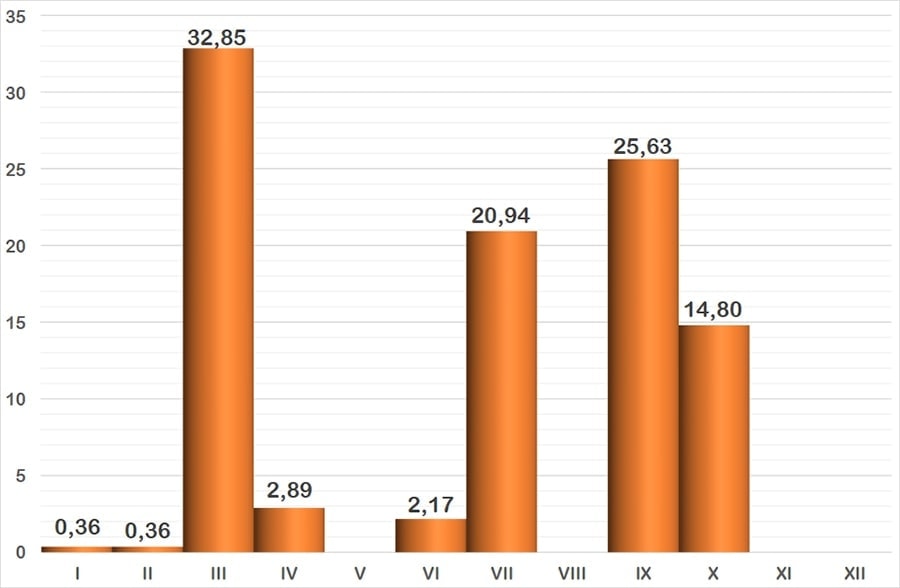During the winter or in non-breeding plumage it can be confused with the common redshank, with which it shares not only the silhouette, but also very reddish legs, its plumage is lighter and the bill is longer, slightly curved at the end and red, at this time of year it is possibly the whitest of all redshanks. In flight it lacks a white wing stripe, and, on the back, there is a white, elongated, oval-shaped, densely barred spot on the rump. During the summer or in breeding plumage, its black livery makes it unmistakable.

Species 1
Spotted Redshank
Scientific name
Family 2
Taxonomic Affinity Group 3
Phenology 4
It is considered a rare bird in the Iberian Peninsula, appearing both in the migratory passages and in winter, and is more frequent in the latter period. It is characteristic that the females begin to migrate before the males, while the males – and this is a rare occurrence in birds – are in charge of clutch (incubation and chicks). Perhaps this distinctive behaviour is what causes an early postnuptial migratory passage, with a lapse at the end of the summer, for another one to happen.

The graph represents the probability of seeing a species during the year, grouped into months. The vertical axis indicates the percentage value. Each of the bars expresses its value. The horizontal axis represents the months: I = January, II = February, III = March, IV = April, V = May, VI = June, VII = July, VIII = August, IX = September, X = October, XI = November and XII = December.
Observation recommendations
In the salt marshes of ‘Poniente’ some small groups of birds can be seen during migrations, but close observation is necessary to identify them during the normal postnuptial passage (September-October), while, in the females’ passage they largely retain part of the summer plumage, although it is not as jet black as the males’.
Observation areas where we can find it
Notes
[1] The names used are from the list of birds of Spain, drawn up by SEO/BirdLife and updated to 2019 (https://seo.org/listaavesdeespana/). The reference is: Rouco, M., Copete, J. L., De Juana, E., Gil-Velasco, M., Lorenzo, J. A., Martín, M., Milá, B., Molina, B. & Santos, D. M. 2019. Checklist of the birds of Spain. 2019 edition. SEO/BirdLife. Madrid.
[2] The taxonomic family to which it belongs is indicated.
[3] Traditionally, waterbirds have been grouped according to their taxonomy or “taxonomic affinity”, i.e., when some birds coincide in certain features that allow them to be classified scientifically, but without leaving the rigour of science, they are put together in these groups so that they can be easily recognised. These groups are the following: Greves (belonging to the Podicipedae family), Herons and Similar (includes the families: Ardeidae -Herons- Ciconiidae -Storks- and Threskiornithidae -Ibises and spoonbills-), Ducks (the whole Anatidae family), Coots and Similar (the family Rallidae corresponding to Rails, Gallinules and Coots), Cranes (also with only one family, the Gruidae), Waders , a heterogeneous group, the most diverse of this classification, includes the families Burhinidae (Stone-curlews), Haematopodidae (Oystercather), Recurvirostridade (Avocets and Stilts), Glareolidae (Pranticole), Charadriidadea (Plovers), Scolapacidae and finally Gulls and Similar (the recently unified family Laridae, i.e. Gulls and Terns).
[4] Phenology studies the relationship between the cycles of living beings and meteorological factors, and in our latitude these factors manifest themselves as variations throughout the year, thus relating the seasons to the birds’ cycles (breeding, migratory journeys, etc.) The graph shows the probability of seeing a bird depending on the month. It uses data from 48 bird censuses carried out between October 2016 and September 2018. The method used is that of a census route with sampling stations, with a total count on the sheet of water.
